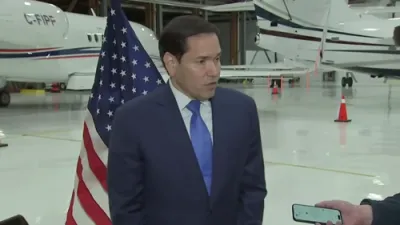רויטע קרייץ צוזאמען מיט חאמאס זוכן אפציעל קערפער פון משכונות
In a rare and tense joint operation, a team from the International Committee of the Red Cross (ICRC) and armed Hamas militants entered a restricted area of Gaza’s Zeitoun neighborhood on November 13, 2025, to recover the bodies of Israeli hostages. The operation took place beyond the so-called “Yellow Line,” a designated boundary marking a no-go zone due to the risk of unexploded ordnance and structural collapse from weeks of heavy fighting.
According to video footage and eyewitness reports, the Red Cross convoy—composed of white humanitarian vehicles marked with the organization’s emblem—moved cautiously through the war-torn streets. Accompanied by armed Hamas fighters, the team navigated dusty, debris-filled roads as bulldozers worked to clear pathways through collapsed buildings and wreckage. The somber mission was part of a phased ceasefire agreement intended to allow humanitarian access and the retrieval of the dead.
The bodies recovered are believed to be those of Israeli hostages killed during Hamas’s October 7, 2023, terrorist attacks—the day that ignited the ongoing conflict. More than two years later, the grim task of locating and returning the remains of victims remains a priority for Israel and international humanitarian agencies, despite the immense danger posed by ongoing instability in Gaza.
While the Red Cross has long maintained neutrality in conflict zones, this particular operation underscores the delicate balance between humanitarian necessity and the political complexities of dealing with armed groups. The organization’s role is strictly limited to recovery and identification, yet even that work requires coordination with Hamas, which still controls portions of Gaza despite sustained Israeli military pressure.
For many observers, the images emerging from Zeitoun capture both the human cost of the conflict and the fragile nature of the current ceasefire. Bulldozers, armed escorts, and humanitarian workers—moving side by side amid ruins—reflect a rare, uneasy cooperation born out of tragedy.
The recovery effort highlights the ongoing challenges of securing lasting peace in Gaza. As the Trump Administration continues to back Israel’s right to self-defense while urging humanitarian access for civilians, the situation on the ground remains precarious. What happened in Zeitoun serves as a stark reminder of the deep scars left by terror and war—and the urgent need for accountability, justice, and the recovery of every last victim.



































